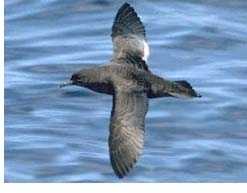Airam Rodríguez (Phillip Island Nature Parks, Cowes, Victoria, Australia) and colleagues have published in the open-access online journal PloS ONE on light pollution affecting Short-tailed Shearwaters Puffinus tenuirostris.
The paper’s abstract follows:
“Light pollution is increasing around the world and altering natural nightscapes with potential ecological and evolutionary consequences. A severe ecological perturbation caused by artificial lights is mass mortalities of organisms, including seabird fledglings that are attracted to lights at night on their first flights to the sea. Here, we report on the number of fledging short-tailed shearwaters Ardenna tenuirostris found grounded in evening and morning rescue patrols conducted at Phillip Island, Australia, during a 15-year period (1999–2013). We assessed factors affecting numbers of grounded birds and mortality including date, moon phase, wind direction and speed, number of visitors and holiday periods. We also tested experimentally if birds were attracted to lights by turning the lights off on a section of the road. Of 8871 fledglings found, 39% were dead or dying. This mortality rate was 4–8 times higher than reported elsewhere for other shearwater species, probably because searching for fledglings was part of our systematic rescue effort rather than the opportunistic rescue used elsewhere. Thus, it suggests that light-induced mortality of seabirds is usually underestimated. We rescued more birds (dead and alive) in peak fledging, moonless and windy nights. Mortality increased through the fledging period, in the mornings and with increased traffic on holiday periods. Turning the road lights off decreased the number of grounded birds (dead and alive). While moon, wind and time are uncontrolled natural constraints, we demonstrated that reduction of light pollution and better traffic management can mitigate artificial light-induced mortality.”

Short-tailed Shearwater, photograph by Mark Carey
Reference:
Rodríguez, A., Burgan, G., Dann, P., Jessop, R., Negro, J.J. & Chiaradia, A. 2014. Fatal attraction of Short-Tailed Shearwaters to artificial lights. PLoS ONE doi:10.1371/journal.pone.0110114.
John Cooper, ACAP Information Officer, 28 October 2014

 English
English  Français
Français  Español
Español